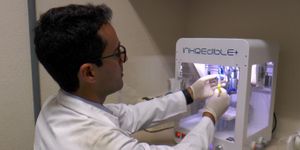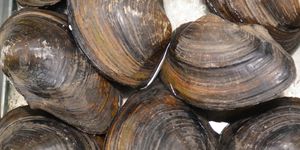Learning More About Cell Dynamics with Holo-Tomographic Microscopy
Scientists that study the inner workings of cells use a variety of microscopy techniques to visualize the action inside of them, and while microscopy methods have gotten very powerful and have allowed us to see many parts of the cell in stasis and at work, there are still limitations. Researchers have now combined a three-dimensional microscopy tool with advanced image analysis to learn more about aspects of cell biology we still don’t know much about. The work has been reported in PLOS Biology by the team of Dr. Mathieu Frechin of a Swiss company called Nanolive.
Intense light is usually needed to see extremely small specimens, including small structures in the cell called organelles, which have various functions. That light can be damaging. Researchers can fix cells in place and label organelles with fluorescent tags, but then they can’t be viewed as they carry out their work. If such labels aren’t used, the images that are obtained don’t always have good resolution.
A new microscopy technique called holo-tomographic microscopy does not require labeling. It uses a beam of light that is split; one part passes through the sample and the other part is used as a reference. An image is generated based on the differences between the refractive indices (which is based on how fast light goes through a sample) of the cell’s components.
The samples under analysis can also be rotated, and the resulting pictures can be stitched together to build a three-dimensional image of the cell, all without dyes or stains, and using a low-intensity light source. Therefore, the integrity of the cell’s structure and function is preserved while the pictures are taken.
In this work, image processing tools were used to acquire quantitative data from the holo-tomographic pictures that were obtained. For the first time, the rate of formation and change of fat droplets were measured over time. This analysis revealed new information about these dynamic processes, including how the droplets synchronized as they swelled.
The researchers have also learned more about organelle spinning, which occurs during one phase of the cell cycle. As the cell prepares to divide into two new cells, the entire nucleus was found to rotate between 80 and 700 degrees over a period of a few minutes to hours (as shown in the video).
"The ability to not only observe, but to measure dynamics of undisturbed living cells, through the application of quantification techniques to holo-tomographic microscopy, is likely to lead to [the] discovery of fundamentally new cell behaviors, and [a] new understanding of previously studied phenomena as well," Frechin said.
Learn more about holo-tomographic microscopy from the video below.
Sources: Phys.org via PLOS, PLOS Biology









